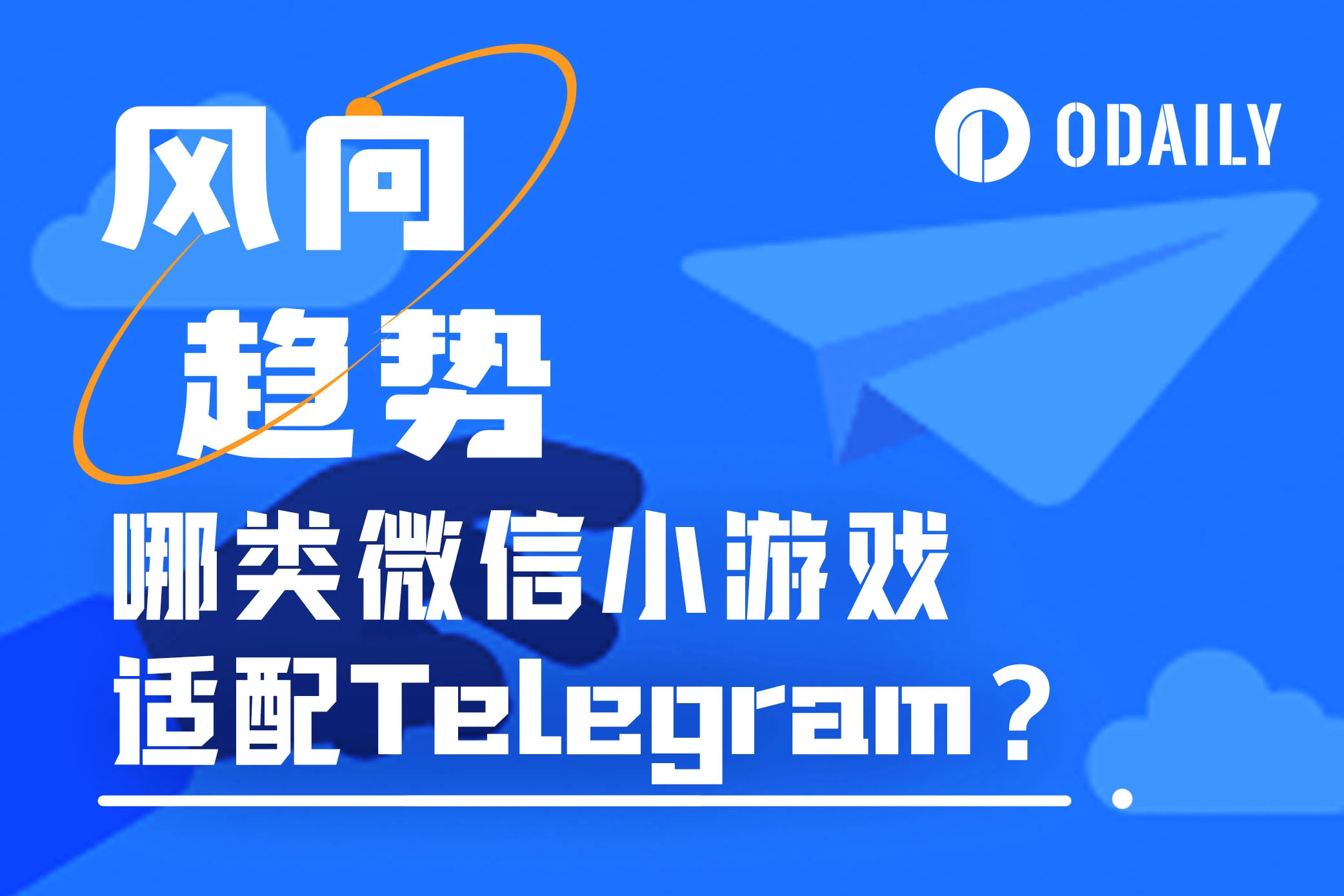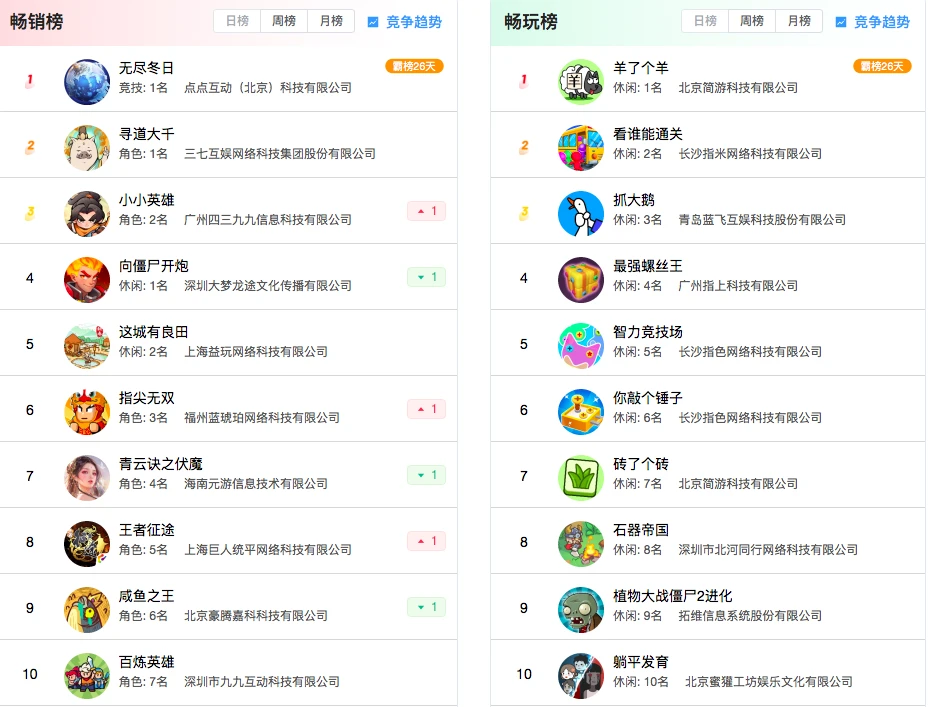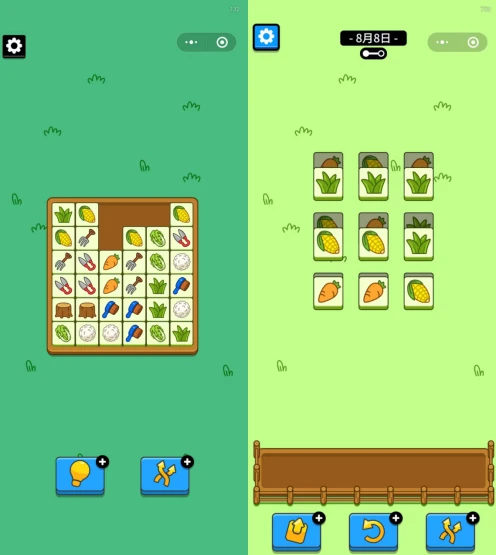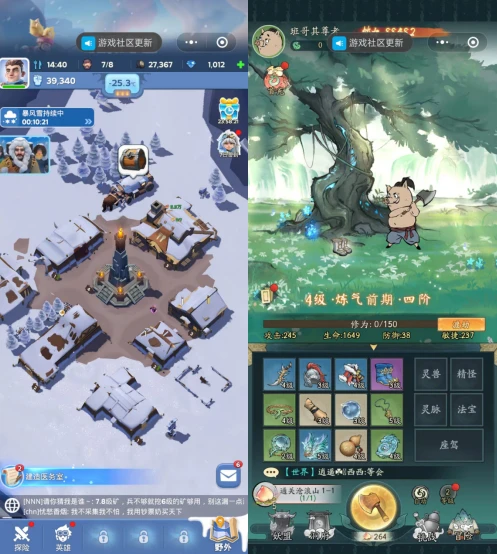Original | Odaily Planet Daily ( @OdailyChina )
Author | Fu Howe ( @vincent 31515173 )

Telegrams mini-program games began to become a new traffic center for Web3 in 2024. Telegram has also gradually evolved from an early encrypted communication IM software into a comprehensive payment, social and entertainment platform.
When seeing words like IM, payment, social and entertainment, the first thing that comes to mind for Chinese people is definitely WeChat, the giant of communication and social software. Combining the development paths of Telegram and WeChat, Telegram is becoming more and more like an encrypted version of WeChat . In addition to the fact that both of them dominate the IM function, the development path of their own ecology is exactly the same: payment first, then social graph, and finally forming a comprehensive ecosystem through built-in applets. But in terms of the underlying structure, they are slightly different. WeChat is a complete Web2 product, while Telegram takes into account both Web2 and Web3.
Currently, WeChat is already a mature business complex, and Telegram is in full swing in building its own mini-program ecosystem. The recent popularity of the new model of Tap to Earn (click-based mini-games) has attracted many developers to Telegram, and in a relatively short period of time, Telegram mini-program games have continued to emerge like a replica.
So why not move the existing WeChat mini-programs with the highest ranking and highest profitability to Telegram for replication? To this end, Odaily Planet Daily uses the WeChat mini-program game rankings as the data basis to explain the types of mini-programs currently suitable for migration from WeChat to Telegram. At the same time, the author conducts in-depth research on each mini-game and shares the economic mechanism plan for how Telegram attracts Web3 users.
The economic mechanisms involved in this article are all subjective deductions of the author. I hope you can give me more advice.
Traffic monetization is more suitable for the Telegram mini-program ecosystem than recharge monetization
The author learned through communication with relevant staff of Gravity Engine, a domestic WeChat mini-program game data detection platform, that the current monetization channels of WeChat mini-program games are roughly divided into two types - traffic monetization and recharge monetization.
Traffic monetization is mainly concentrated in the monetization model of games with long-term user retention rates, that is, by inserting incentive advertisements in the game as a traffic monetization channel, such as clearance games or survival games. When the game cannot progress or requires high passing rewards, players can achieve their own wishes by watching advertisements. In this process, advertisers who place advertisements need to pay traffic fees to the game publisher. The whole process is the traffic monetization method of mini-program games.
In addition, recharge monetization is concentrated on the games need to attract players to spend money to satisfy the publishers revenue. Such games need to be very well-made to attract users to consume and recharge. There is less attention paid to the users online retention rate, and more focus is on game types such as hosted monster hunting or PVP confrontation.
Below is the data from the gravity engine, as of August 1st.

Odaily Planet Daily Note: The best-selling list represents the ranking of games that realize monetization through recharge, and the most fun list represents the ranking of games that realize monetization through traffic.
How should developers of Telegrams built-in mini-program games choose the right game model? To this end, the author personally tried the above 20 games and found that games that monetize traffic are more suitable for early development on Telegram, while recharge monetization needs to be ported and developed in the middle and late stages of Telegram.
How to adapt traffic monetization games to Web3 users
According to Odaily Planet Daily, some of Telegrams mini-games adopt a traffic monetization model, mainly in the form of token incentive tasks (similar to the Web3 task platform), such as watching YouTube videos or completing traffic delivery tasks set by the project party.
However, WeChat has built-in incentive advertising APIs in mini-program games and cooperated with traditional advertising traffic platforms to access the product library of the advertising traffic platforms, thereby obtaining revenue through advertisers placing advertisements. The two are at different stages of development in traffic monetization, and Telegrams own advertising platform cannot support an incentive advertising model similar to that of WeChat mini-program games.

According to the above picture, game models headed by 羊了羊 are very popular among users. Among them, 羊了羊 has changed from a single game model to a multi-game model, including 砖了个砖, which is ranked eighth on the play list, is its built-in game.
This type of game is a combination of casual puzzle and strategy games, and is very addictive. Once you get into it, when you fail to pass a level or are stuck, most users will choose to pass the level through incentive ads. In other words, the game mechanism becomes more and more difficult as you progress, and you may not be able to pass the level without watching more than 5 ads. Most of the games on the free play list are of this type, taking advantage of the users competitive mentality and unwillingness to spend money, forcing users to earn money through 30-second ads.
Although such games are easier to develop and have larger traffic, the returns are relatively stable and belong to a stable income model. Unless the traffic surges, there will be no higher source of income. At the same time, as Web3 users who have long been accustomed to GameFis investment-driven, such games are not very attractive to them, so it is better to play mature games.
Therefore, the author has come up with some more suitable needs for Web3 users based on this type of game. Take clearance-type games as an example:
A token reward mechanism is set up at each level, which is divided into three levels according to the level clearance performance. The number of tokens in different levels varies, which attracts players to stay and play for a long time.
Traffic monetization still exists. If you fail to pass a level, you need to watch ads to revive, thus taking into account the business model of Web2 traffic monetization and forming a stable cash flow.
The first one is a token supply-side solution, which provides special props on the token demand side. Special props have the ability to change the status quo of the level, so users have to consume tokens to buy special props in order to pass the level and obtain tokens.
Recharge-based monetization games are not suitable for development on Telegram mini-programs due to development difficulties and game mechanics issues.
According to the WeChat Mini Program Game Rankings, recharge-type games are generally divided into three types: PVP mode, idle mode, and development mode. First of all, the development cost of these game types is higher than that of traffic monetization games, and the development speed is slower and the payback period is longer. In addition, it is necessary to design novel game mechanisms and story backgrounds, which is no less difficult than developing an App game.

Especially for games at the top of the rankings, such as Endless Winter and Seeking the Great Thousand Worlds, the internal mechanisms of the games are relatively complex and there are many types of games. They are not suitable for development teams to quickly seize the market. They are more suitable for the recharge and monetization model after the Telegram applet ecosystem is improved and users have the ability to consume games.
However, if a company is willing to develop such games, it can embed crypto payments into the game itself , such as using Toncoin, USDT or other crypto assets to pay for recharges, which may attract Web3 users. Especially in Russia, Central Asia and areas with relatively backward Internet, Telegrams mini-programs are a brand new product for them. Choosing game types or application tools suitable for such people may open up new markets.
Generally speaking, recharge-based monetization games are not suitable for Telegrams current mini-program game ecosystem, and such games are not yet supported by GameFis economic model. Most of the tokens issued are faced with a direct sell-off, which is the same as the current predicament of GameFi.
in conclusion
Odaily Planet Daily believes that Telegram needs to combine the successful experience of WeChat mini-program games and move WeChat mini-program games to Telegram in the early stage to accelerate the development of ecological construction.
The author also compared traffic monetization games and recharge monetization games and found that it is more suitable to introduce traffic monetization games in WeChat into the Telegram ecosystem. Traffic monetization model games are more suitable for development in the early stages of Telegram, while recharge monetization model games need to be considered for porting after the Telegram ecosystem is relatively mature.
At the same time, according to the communication between Odaily Planet Daily and Telegram developers, Telegrams own mini-programs support Javascript, which is commonly used in China, and can attract most mature domestic developers to build the Telegram mini-program ecosystem. However, if the Telegram mini-programs want to establish smart contracts on TON to ensure the Web3 transaction form, the development difficulty is relatively high from the perspective of programming languages.
However, according to relevant staff of Gravity Engine, domestic WeChat mini-program games are becoming increasingly mature and are facing serious internal competition. Many mature companies plan to go overseas for construction early next year. Telegram, as a new social platform with a relatively rich variety of assets, may become a new gathering place for domestic developers.
In short, Telegram is rapidly growing into an encrypted version of WeChat, and the construction of its mini-program ecosystem is in full swing, providing developers with broad opportunities and challenges.










